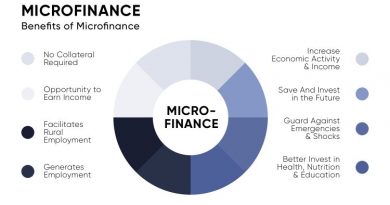Two and Twenty Explanation of the Hedge Fund Fee Structure

Contents
Two and Twenty: Hedge Fund Fee Structure Explained
What Is Two and Twenty?
Two and twenty (or "2 and 20") is a standard fee arrangement in the hedge fund industry, venture capital, and private equity. Hedge fund management companies charge clients a management fee and a performance fee. "Two" represents the annual management fee of 2% of assets under management (AUM). "Twenty" refers to the performance fee of 20% of profits made by the fund above a predefined benchmark. While this fee structure has made many hedge fund managers wealthy, it has faced criticism from investors and politicians in recent years.
Key Takeaways
- Two refers to the standard 2% management fee of assets annually, while 20 means the 20% incentive fee of profits above the hurdle rate.
- This fee structure has made many hedge fund managers multi-millionaires or billionaires but has drawn scrutiny from investors and politicians.
- A high watermark may apply to the performance fee, ensuring the fund manager is only paid a percentage of profits if the fund’s net value exceeds its previous highest value.
How Two and Twenty Works
The 2% management fee is paid to hedge fund managers regardless of the fund’s performance. Even if the fund performs poorly, a hedge fund manager with $1 billion AUM earns $20 million in management fees annually. The 20% performance fee is charged only if the fund achieves performance above a base threshold known as the hurdle rate, which could be a preset percentage or based on a benchmark like an equity or bond index return.
Some hedge funds also face a high watermark for their performance fee. A high watermark ensures the fund manager is paid a percentage of profits only if the fund’s net value exceeds its previous highest value. This prevents the fund manager from receiving significant sums for poor performance and ensures any losses are recouped before performance fees are paid.
Two and Twenty: Billions Earned
The highest-paid hedge fund managers made billions of dollars in fees in 2018, according to Bloomberg. The table below shows the top five fund managers.
| James Simons | Renaissance Technologies | $1,600,000,000 |
| Ray Dalio | Bridgewater Associates | $1,260,000,000 |
| Ken Griffin | Citadel | $870,000,000 |
| John Overdeck | Two Sigma | $770,000,000 |
| David Siegel | Two Sigma | $770,000,000 |
These highly successful fund managers generated significant management fees and performance fees. While some argue that the fees are justified by their consistent outperformance, it raises questions about whether the majority of fund managers generate enough returns to support the Two and Twenty fee structure.
Is Two and Twenty Justified?
Jim Simons, the highest-paid hedge fund manager, founded Renaissance Technologies in 1982. Renaissance is known for its flagship Medallion fund, which has generated exceptional returns. Over the years, it achieved an average annual return of about 40%, with returns of 71.8% annually between 1994 and 2014. However, such success stories are rare in the hedge fund industry. Hedge funds have underperformed equity indices for years, with an average annualized return of 6.09% from 2009 to 2018 compared to the S&P 500’s 15.82% annual return over the same period.
Warren Buffett estimates that investors have wasted over $100 billion seeking superior investment advice from hedge funds. Chronic underperformance and high fees have caused investors to withdraw billions from hedge funds since 2016. The increase in the number of hedge funds has also led to a slight decrease in average fees.
Hedge fund managers are also facing pressure from politicians to reclassify performance fees as ordinary income for tax purposes. Legislation has been introduced to end the favorable tax treatment of performance fees.
An Example of Two and Twenty
Let’s consider a hypothetical hedge fund, Peak-to-Trough Investments (PTI). At the beginning of Year 1, PTI’s AUM is $1 billion, and the fund is closed to investors. By the end of Year 1, AUM grows to $1.15 billion. By the end of Year 2, AUM drops to $920 million but rebounds to $1.25 billion by the end of Year 3. If the fund charges the standard Two and Twenty, the total fees made by the fund each year can be calculated as follows:
Year 1:
Fund AUM at the beginning of Year 1 = $1,000M
Fund AUM at the end of Year 1 = $1,150M
Management fee = 2% of year-end AUM = $23M
Performance fee = 20% of fund growth = $30M
Total fund fees = $23M + $30M = $53M
Year 2:
Fund AUM at the beginning of Year 2 = $1,150M
Fund AUM at the end of Year 2 = $920M
Management fee = 2% of year-end AUM = $18.4M
Performance fee = Not payable as high watermark of $1,150M has not been exceeded
Total fund fees = $18.4M
Year 3:
Fund AUM at the beginning of Year 3 = $920M
Fund AUM at the end of Year 3 = $1,250M
Management fee = 2% of year-end AUM = $25M
Performance fee = 20% of fund growth above high watermark = $100M x 20% = $20M
Total fund fees = $25M + $20M = $45M



